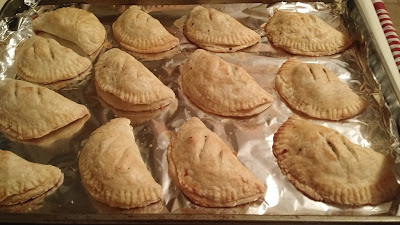Guest post from Chris Baldelli
Thanksgiving is a food-focused holiday, and there's nothing more iconic than the turkey.
This year, we made a smaller-portioned meal with big flavors. This included brining the turkey.
The science of brine is simple. Given enough time and proximity, higher concentrations will diffuse into lower concentration solutions. The brine is high-salt, high-sugar, sometimes acidic, and packed with flavors. The turkey benefits from the brine's bountiful boundary layer gradient.
Brine Guidelines:
- For each gallon of brine, use ~1 cup salt and ~1 cup sugar.
- Peppercorns, cloves, allspice, and herbs are your flavor-adders.
- Acidity can be used, in moderation. As with marinades, acid breaks down the proteins and facilitates flavor assimilation. Turkey is already a tender bird, so too much acid will make it mushy.
Quarter the lemon and orange, then dump everything into a pot. Heat the mixture just enough to dissolve the salt and sugar.
Allow it to cool and drop in the bird. We used a bone-in turkey breast (basically a whole turkey without wings or legs).
While diffusion is temperature-dependent... so is the growth of bacteria colonies. Enterococcus and E. coli are commonly found on poultry, but rarely result in food poisoning (
Link to study). Your oven will be the site of a bacterial xenocide tomorrow, so wash your hands and rest easy.
Good morning culinary nerds, your bird awaits. Pull it out of the brine and pat dry.
Next, we need stuff the bird with things that will help regulate moisture and flavor from the inside. Onions take up space and are mostly water, so their great candidates here.
Then, we build the rub. In this case, we wanted an oil-based paste to act as a barrier for temperature regulation (and keeping the juices inside). As before, choose your flavor profiles for the audience.
Garlic and mustard are the primary flavors, but some herbs and lemon are there to compliment the brine's flavor profile.
2/3 of the rub goes under the bird's skin, so lift it up in the following areas:
The final 1/3 goes on the outside.
Add some liquid to the bottom of the roasting pan. This helps to regulate temperature and increases the relative humidity inside the oven (preventing some moisture from leaving the bird). Our pan mixture was 20% water + 20% white wine + 30% leftover brine.
Get in there, little guy! 275 degC oven temperature.
Every 30 mins - 1 hour, check the internal temperature. At the center of the breast, your goal is 165 degC.
Before slipping it back in the oven, spray with a little oil on the outside to refresh the barrier.
When the temperature gets to ~140 degC, you can crank up the temperature to 350-400 degC to fry the skin a nice brown color.
Allow the bird to cool and remove the internal veggies (yes, the onions are edible and tasty).
Using a sharp knife, cut across the grain (normal to the striations of the muscle).
You can make a gravy/sauce from the pan drippings. Let them cool and separate into layers of fat and juice. Use 1/8 cup of the fat and some flour to build a roux. Then incorporate some of the juice until it becomes a thin sauce. The flour will thicken into a gravy with some heat and time.
Happy Thanksgiving from Chris & Stephanie!






























































